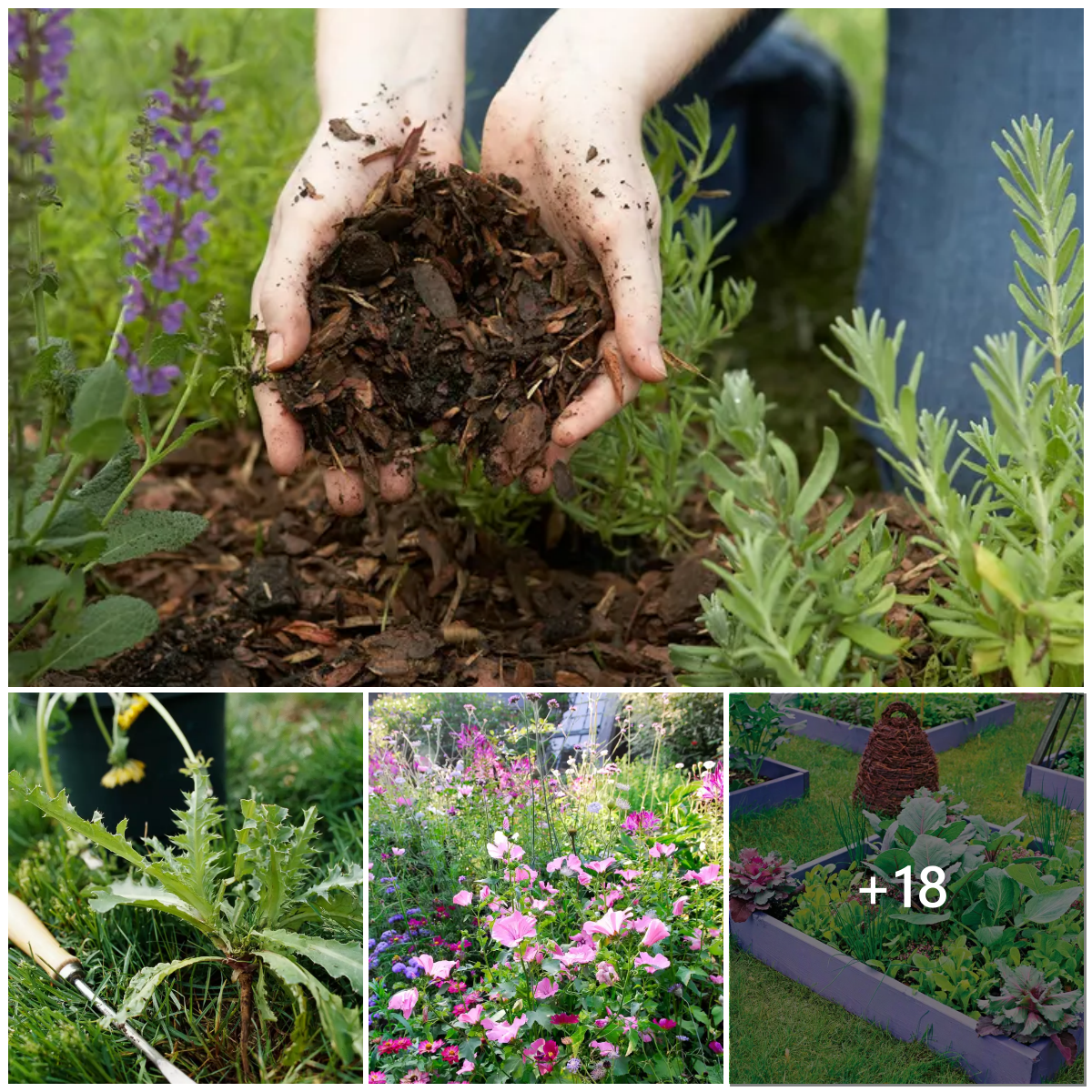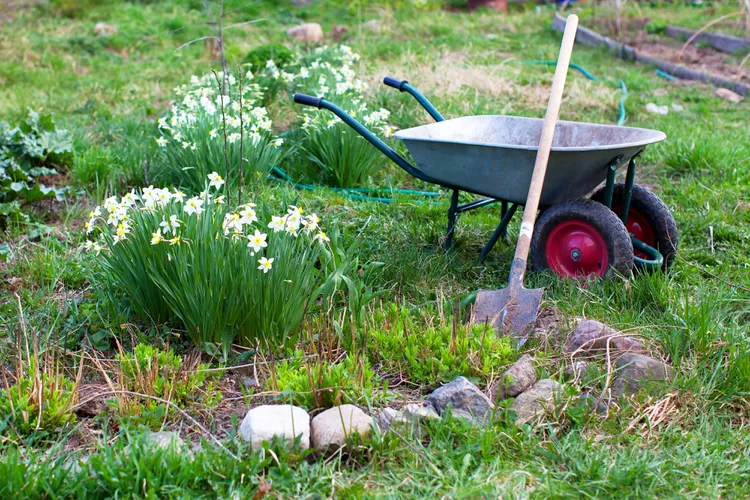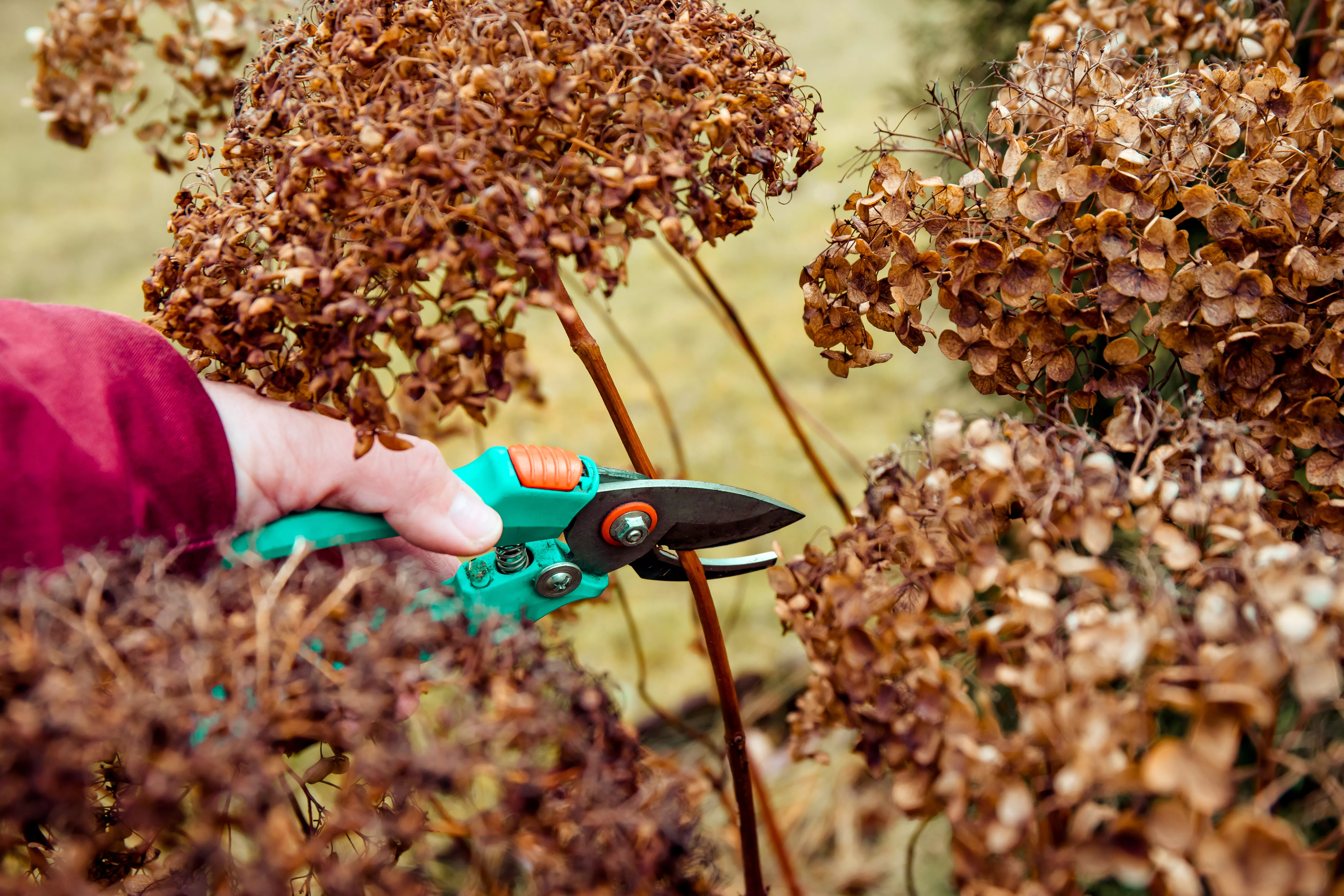No one wants to sit on a grimy patio chair or eat outdoors at a dirty table. Routine cleanings are a must to keep your patio furniture in pristine condition. You should clean outdoor furniture four times a year for best results: once at the beginning of summer, once at the end of summer, and a couple of times in between. The best method for cleaning your patio furniture depends on what material it is. We’ve identified the right way to clean wood, wicker, metal, glass, and plastic furniture. These cleaning tips are guaranteed to breathe new life back into your patio furniture. Store furniture indoors during the winter to prevent additional weathering and staining.
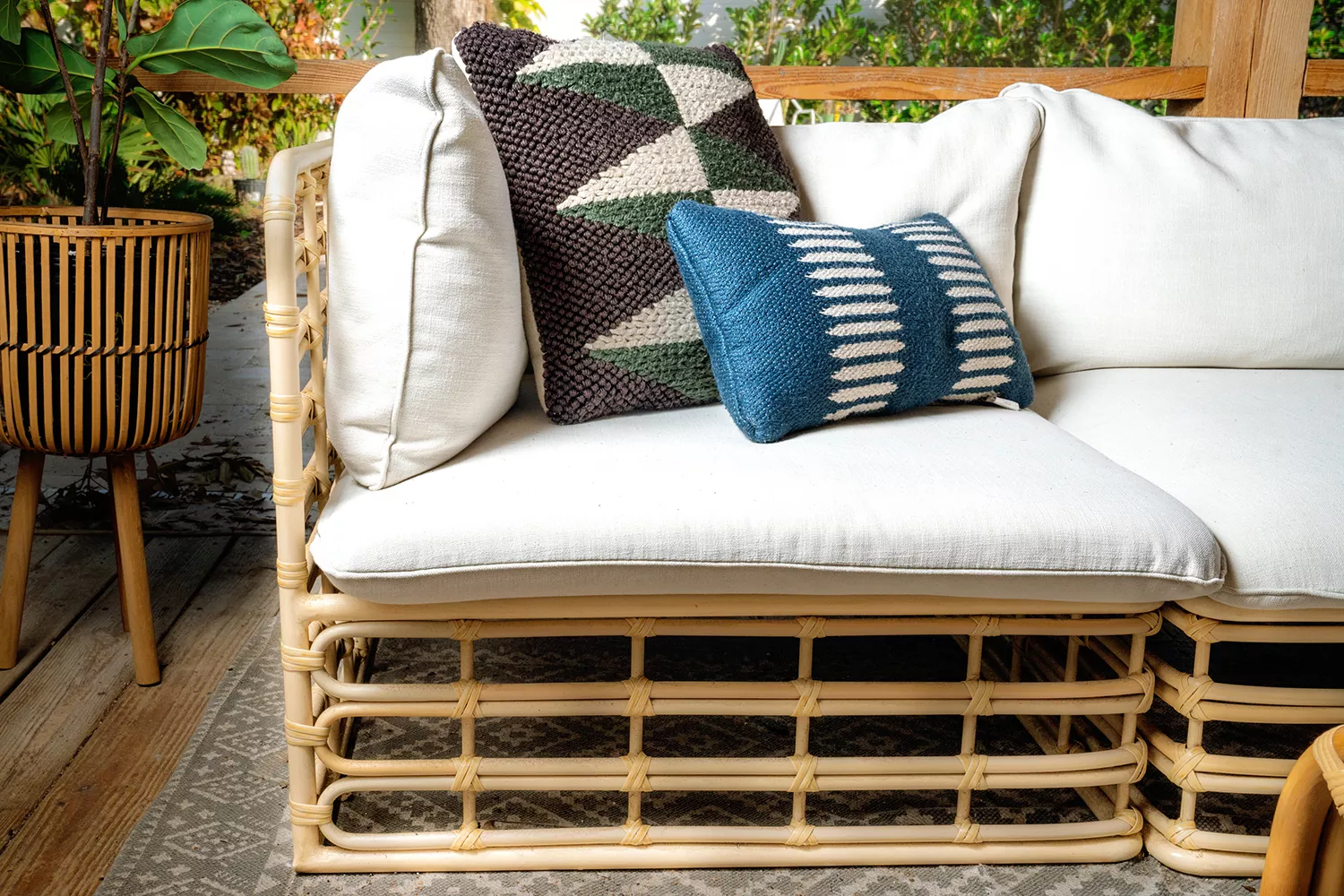
How to Clean Wood and Wicker Outdoor Furniture
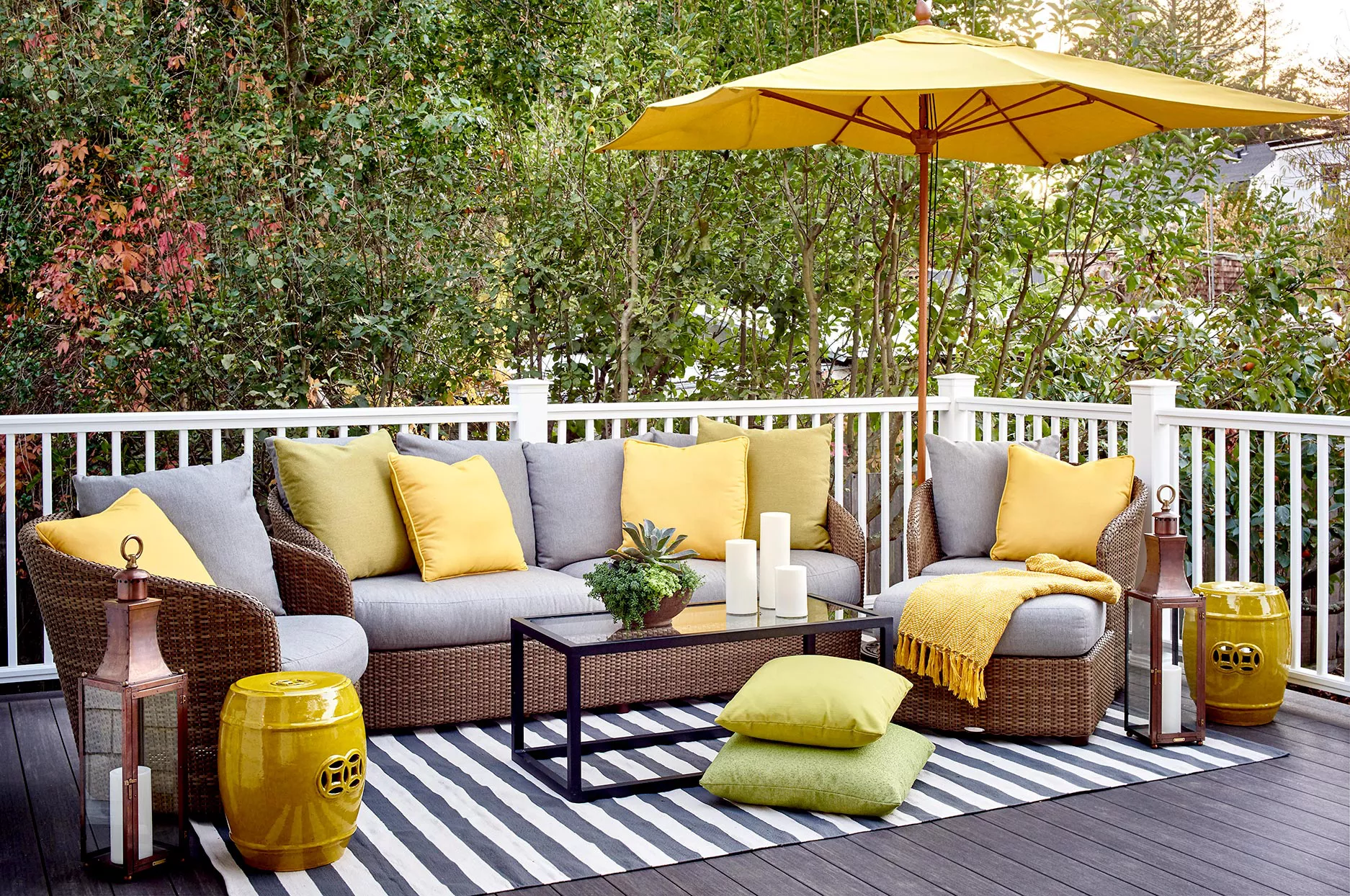
Rescue dull, dirty wood or wicker furniture with these easy cleaning strategies. To remove grime, use a mild oil-based soap, such as Murphy Oil Soap, mixed with warm water. Mix 1/4-cup ammonia, 2 tablespoons white vinegar, and 1 quart of warm water for a DIY cleaning solution. Commercial wood cleaners are also effective for cleaning patio furniture, but read directions carefully. Wicker and painted woods might require diluting the solution.
To protect your patio furniture, regularly wipe down wood to remove dirt, debris, and excess water. For hardwood furniture, the best option is an annual sanding and application of a fresh protective finish coat such as oil, stain, or polyurethane. In addition, hose down wicker every few weeks to prevent dirt buildup in crevices.
How to Clean Metal, Iron, and Aluminum Outdoor Furniture

Proper cleaning is essential to preserve the shine on outdoor metal furniture. For aluminum pieces, oxidation is the most common problem. Before cleaning, remove as much of the imperfection as possible using a metal polishing paste or a 1:1 solution of white vinegar and water. Avoid using chemicals such as ammonia and trisodium phosphate (TSP); alkaline cleaners cause oxidation.
To protect its natural luster:
- Wash aluminum furniture frequently and remove scuff marks with a soft cloth dampened with a non-abrasive cleaning product.
- Combat rust by sanding it off, along with damaged paint.
- Wipe off metal residue with a cloth dampened with mineral spirits or naphtha.
- Use a rust-resistant primer before painting with rust-resistant paint.
Consider having your wrought-iron furniture sandblasted or powder-coated for added protection. To protect after cleanings, apply a coat (two for iron) of automotive wax.
How to Clean Glass Patio Furniture
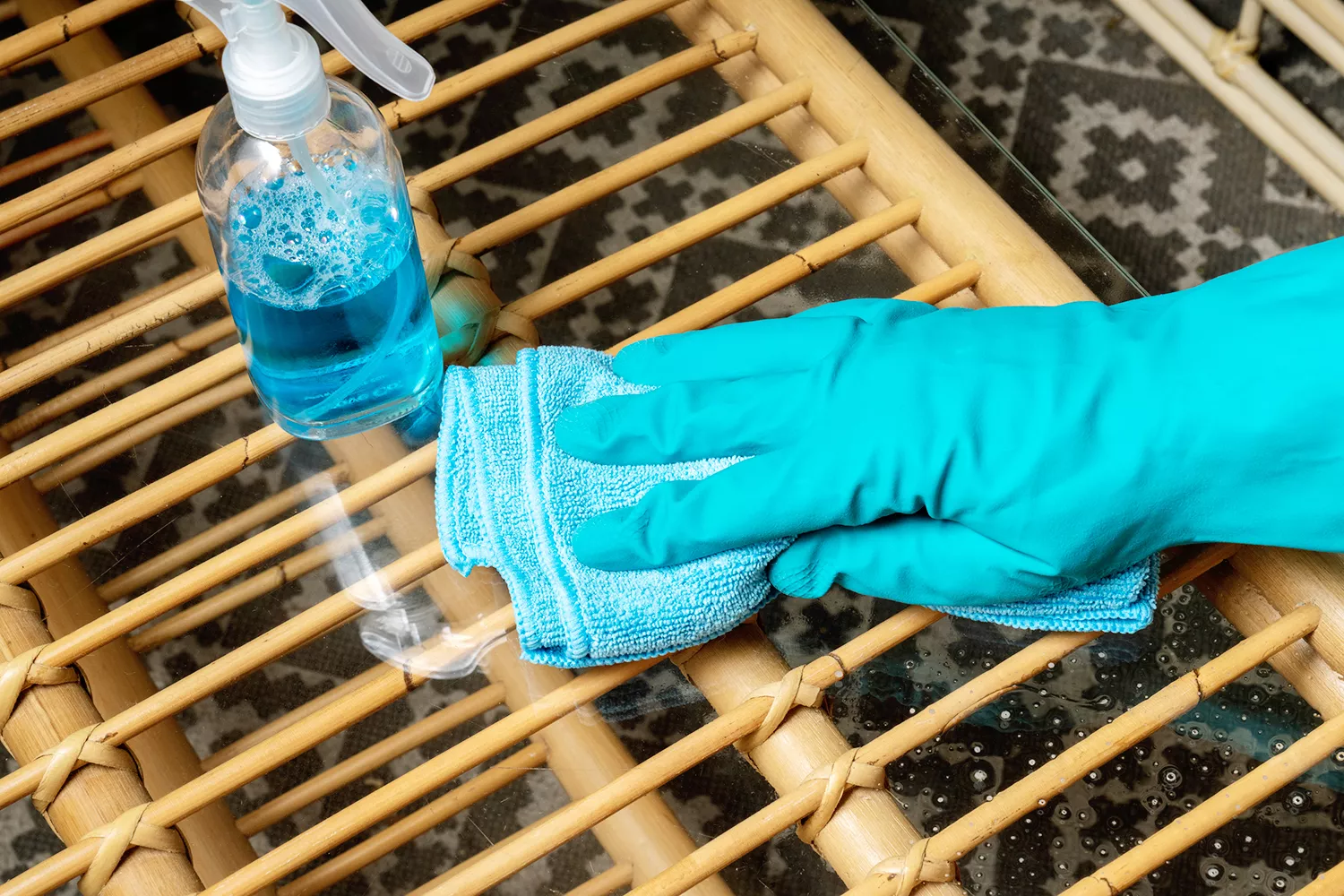
Keep glass patio tables sparkling with a few simple cleaning steps. First, remove any stuck-on debris with a glass-safe, non-abrasive cleanser and cloth or sponge. Many scrub brushes will scratch glass, so opt for one designed to tackle tough cleanup jobs that won’t damage your furniture.
Dish detergent and home cleaning solutions are the most effective cleaners. After an initial cleaning, spray white vinegar or glass cleaner on the surface and wipe away with a microfiber cloth or paper towel. Wipe down the underside of a glass table at least once a month to prevent irreversible grime. Clean frames of glass tables according to their material type.
To keep outdoor glass furniture clean, you should cover your glass table when it’s not in use. If needed, fix minor scratches and chips in the glass with a glass repair kit.
How to Clean Plastic and Hard-Resin Outdoor Furniture
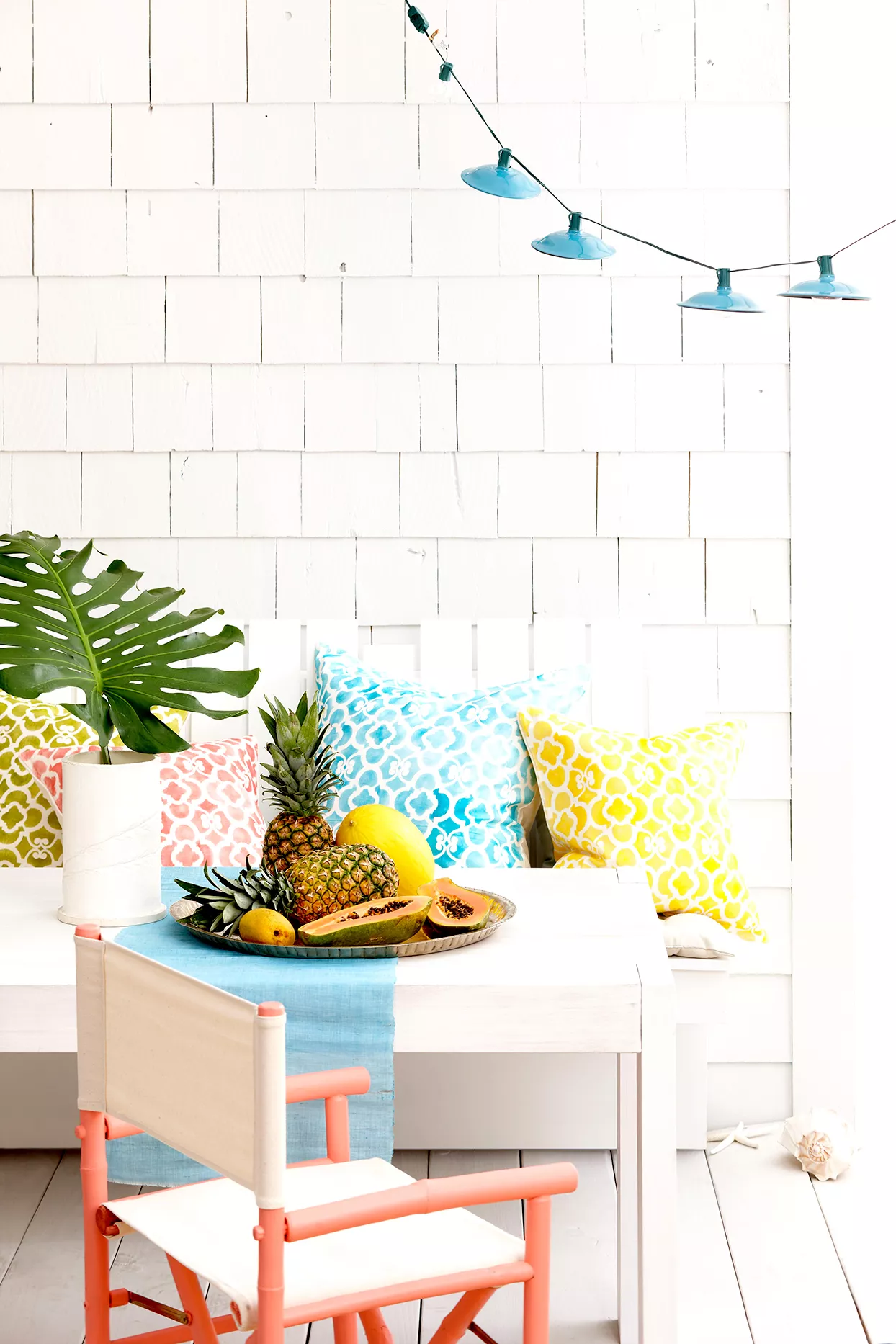
Use these tips to remove stains and built-up grime on plastic patio chairs and tables:
- Make your own mild cleanser by mixing 1/2 cup baking soda with 1-gallon warm water.
- For tougher stains, mix 3 tablespoons dishwasher detergent (which contains a mild bleaching agent) and 1 gallon of warm water.
- For colored plastic, mix 1/4-cup vinegar with 1 quart of warm water.
It’s best to avoid using chlorine and bleach on white plastic furniture because they eat away at the material.
For stubborn stains, dampen a clean rag with white distilled vinegar and wipe down the piece. You can also sprinkle baking soda on a wet sponge to create a mild abrasive that will peel away stains but won’t scratch surfaces. Avoid abrasive cleaners, which will scratch plastic outdoor furniture. After washing your plastic furniture, protect it with a coat of automotive paste wax.
